Get Rid of Unwanted Garden Plants: Actionable Guide
This helpful no-fluff guide provides comprehensive strategies to effectively remove unwanted garden plants by implementing various methods such as manual removal, smothering, using herbicides, and applying natural solutions like vinegar, made to answer everything from common weeds to invasive species.


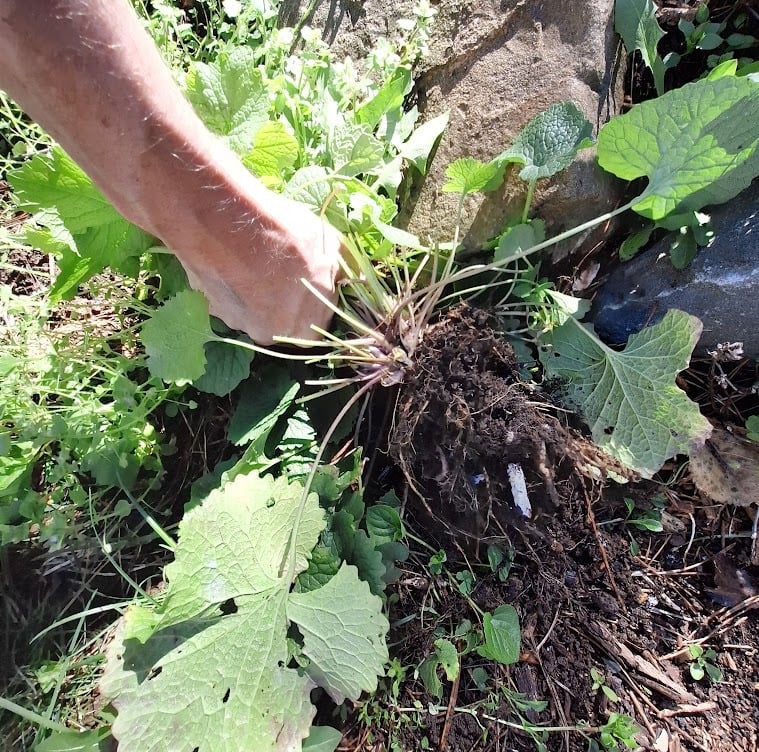



Understanding Unwanted and Invasive Plants to Better Remove Them
The first step in getting rid of unwanted plants, no matter whether tall garden plants on walls or white flowering weeds between pavers, is identifying which ones are invasive and truly disturbing.
Weeds, invasive species, or simply plants that have outgrown their space can become problematic.
Once identified, we experienced that effective removal depends on the plant’s nature and location.
The Best Techniques to Remove Garden Plants
Manual Removal
For plants in containers and garden beds, we found that manual removal is often the most effective method. This involves digging up the shrubs or plants, including the root system, to prevent regrowth.
Expert Tip: If you want to weed and dig up weeds plants like dandelions or other deep-rooted weeds, use a specialized weeding tool to remove the entire root without breaking it.
Smothering
This environmentally friendly technique involves covering the plants with a thick layer of mulch, cardboard, or a specialized landscape fabric.
The cover blocks sunlight, eventually killing the plants due to lack of light. Smothering is particularly effective for areas with dense weed growth and for grassy weeds.


Herbicidal Solutions
Choose a herbicide appropriate for the specific type of plant and apply it according to the manufacturer’s instructions to avoid harming nearby desirable plants.
For persistent plants that keep growing back, we experienced that a systemic herbicide that travels down to the roots can be effective.
Salt and Vinegar Solutions
For a non-toxic approach, especially useful in hard-to-reach areas like between pavers or along pathways, consider using a salt and vinegar solution as one of the natural weed-killing methods.
To do it, mix one part salt with two parts water and add a splash of vinegar. Apply this solution directly to the leaves and stems of unwanted plants on a sunny day to accelerate the desiccation process.

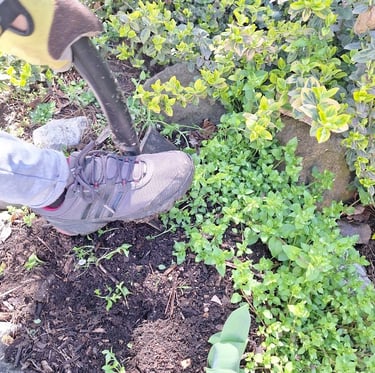



How to Remove Trees and Shrubs
For smaller trees and shrubs, you can manually dig out the roots after cutting the plant down to a manageable size.
After we successfully removed 3 trees ourselves we want to advise that for larger specimens, consider hiring a professional tree service, especially if the tree poses a risk to buildings, or power lines, or is too large to handle safely.
After tree removal, grind down or dig out the stump to prevent regrowth and use the space for replanting.
How to Remove Perennials Correctly
Use a garden fork to loosen the soil around the plant and gently lift the entire root system out of the ground.
For perennials that spread through rhizomes or stolons, like mint or bamboo, ensure all parts of the root system are removed to prevent a comeback like it happened in our case.
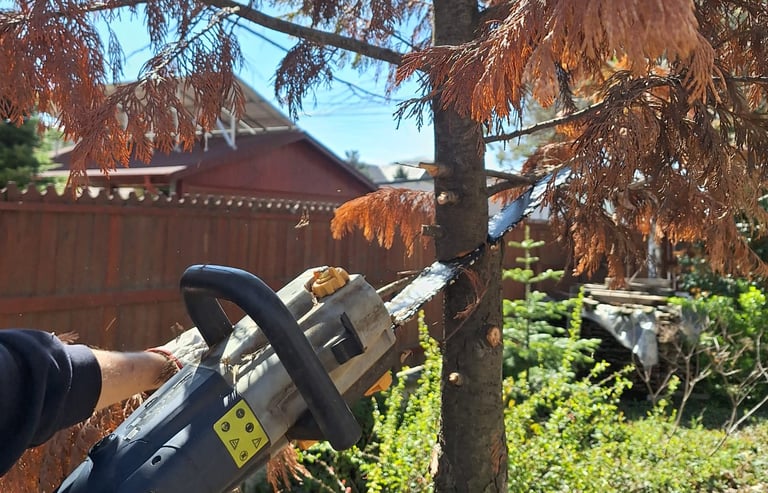

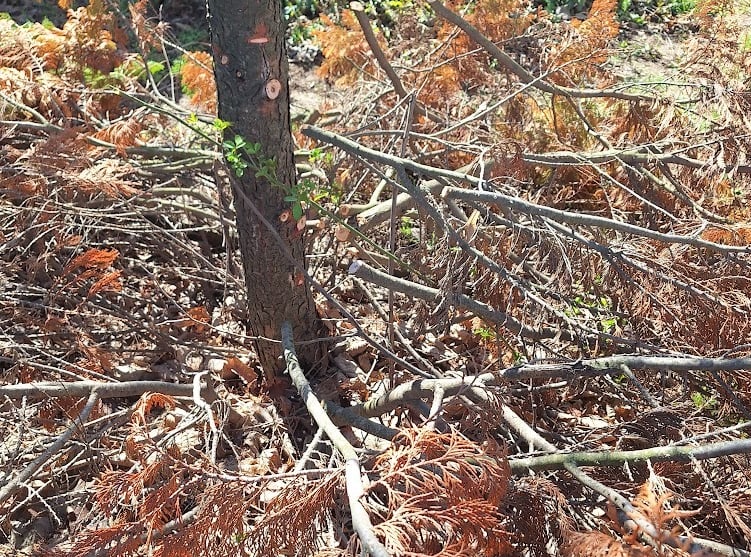

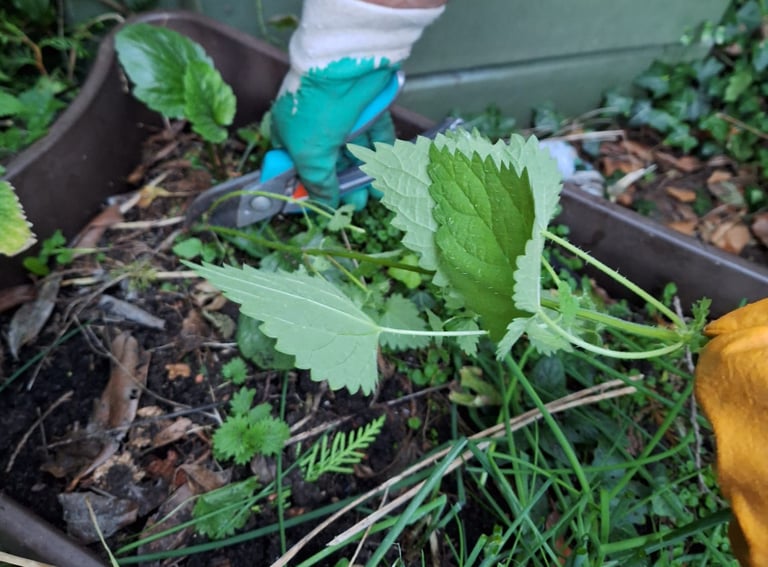







Removing Smaller Plants: Weeds
1. Hand Pulling
For immediate results in small areas, hand pulling weeds is effective, especially after a rain when the soil is moist and roots are easier to extract. This method works best for annual weeds with shallow root systems.
2. Mulching
Applying a thick layer of mulch can suppress weed growth by blocking sunlight. Organic mulches, such as wood chips or straw, also help improve soil health as they decompose.
3. Boiling Water
Pouring boiling water directly onto weeds can effectively kill them, including the roots. This method is ideal for weeds growing in gravel paths or driveway cracks where other plants won’t be harmed.
How to Prevent and Get Rid of Very Invasive Plants
Start by correctly identifying the invasive species and understanding its growth pattern.
For plants like Japanese knotweed or kudzu, use a combination of cutting back vigorously and applying ideally natural herbicides that target the roots to prevent regrowth. Installing root barriers like mulch can help contain the spread of particularly aggressive plants.
Expert Tip: For persistent invasive species, consider seeking advice from local extension services or hiring a professional who specializes in invasive plant management to ensure that the removal is effective and environmentally responsible, but in most cases, you can do it on your own.
Preventative Measures
We saw that long-term control of unwanted plants also involves preventative measures:
Plant native species that are less likely to become invasive.
Regularly clean gardening tools to prevent the spread of seeds or plant parts.
Design garden layouts that include barriers or borders to contain aggressive plants.



FAQ
Does vinegar kill plants?
Yes, vinegar can effectively kill plants due to its acetic acid content, which burns plant tissue.
However, vinegar may need to be applied multiple times to fully kill established plants or perennials. Vinegar is non-selective and can harm any plants it touches, so we experienced that it should be used cautiously and precisely.
How to get rid of an established plant?
To remove an established plant, particularly one with deep or extensive roots, you need to dig out the entire root system to prevent regrowth.
Use a sharp spade or shovel to excavate around the plant, ensuring you remove all roots and rhizomes. For very large or woody plants, you may need tools like a root saw or even a stump grinder.
After removal, monitor the area for a few months to manage any regrowth from missed roots.
What is the most effective way to permanently remove invasive perennials?
To permanently remove invasive perennials, you should dig out the entire root system to prevent regrowth. For species that spread through rhizomes or root fragments, repeated removals may be necessary.
Additionally, applying a systemic herbicide according to label directions can help eradicate stubborn roots.
Can mulching alone control weed growth?
If done insistently: Yes, mulching is very effective at suppressing weeds by blocking light and preventing seed germination.
However, for established weeds or areas with heavy weed infestation, combine mulching with other methods such as hand pulling or targeted herbicide application for better results.
What should I do if boiling water and vinegar treatments do not kill weeds?
If boiling water or vinegar treatments are ineffective, the weeds may have extensive root systems that these methods can't reach.
In such cases, you may need to switch to mechanical removal or the careful use of a systemic herbicide that targets the roots without harming surrounding plants.

Sources
Nature and Sustainability uses only high-quality sources, including peer-reviewed studies, to support the facts we describe in our articles. Please read our editorial policy to learn more about how we keep our content accurate, reliable, and trustworthy.
More general information on cutting down trees: How to Cut Down a Tree Safely | Family Handyman
Information and facts on herbicides: Herbicides | US EPA, Herbicide How-To | (okstate.edu)
Controlling plants, invasive species, and weeds: Mulching Basics (cnps.org), Pulling Weeds Tips and Tricks (angi.com)
Invasive plants general information: Invasive Plants (usda.gov)
Kill unwanted plants with vinegar: How to Use Vinegar to Kill Weeds on Walkways and Driveways (bhg.com)
Kill garden plants and weeds with salt: Using salt to kill weeds: here's what you need to know | (homesandgardens.com)
More general information about removing unwanted plants: 'Well Established' Garden Plants | Gardening Know How, Plant roots: understanding structure and function in an ocean of complexity - PMC (nih.gov), Herbicide application methods for invasive plants | Business Queensland
Share this article:




Article By:
Calin has been in the garden industry for 5 years and knows a lot about gardening and plants. He owns this website and is responsible for most of the content.
Reviewed By:


Florin, a more technical guy, is responsible for designing, reviewing updating the articles but also optimizing for SEO so that everything we publish is deam good.

